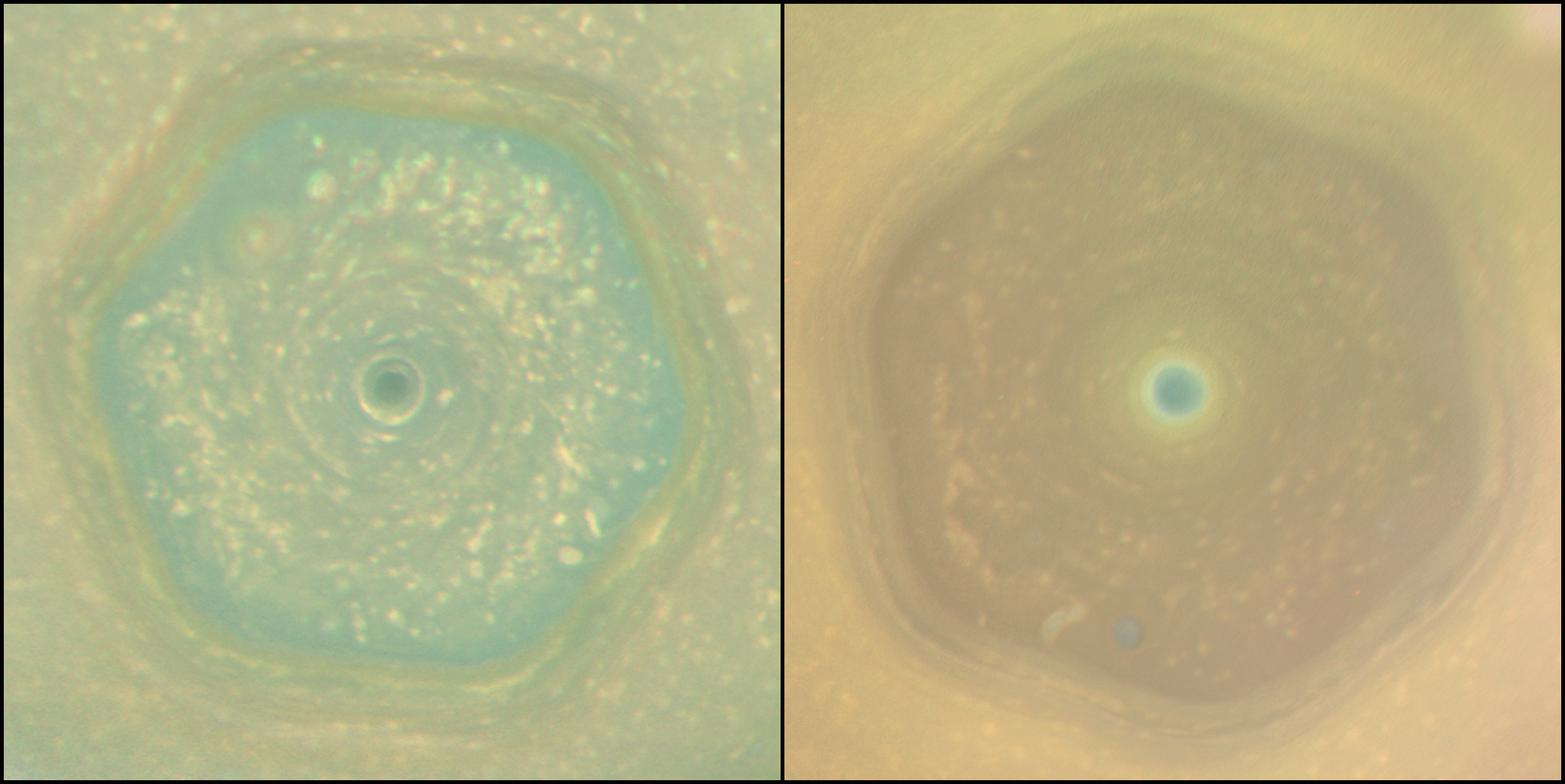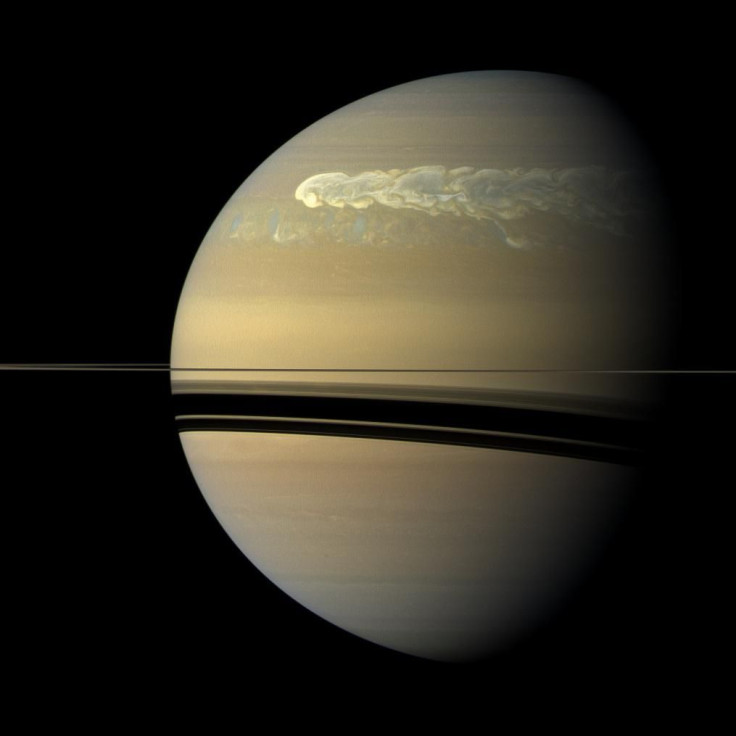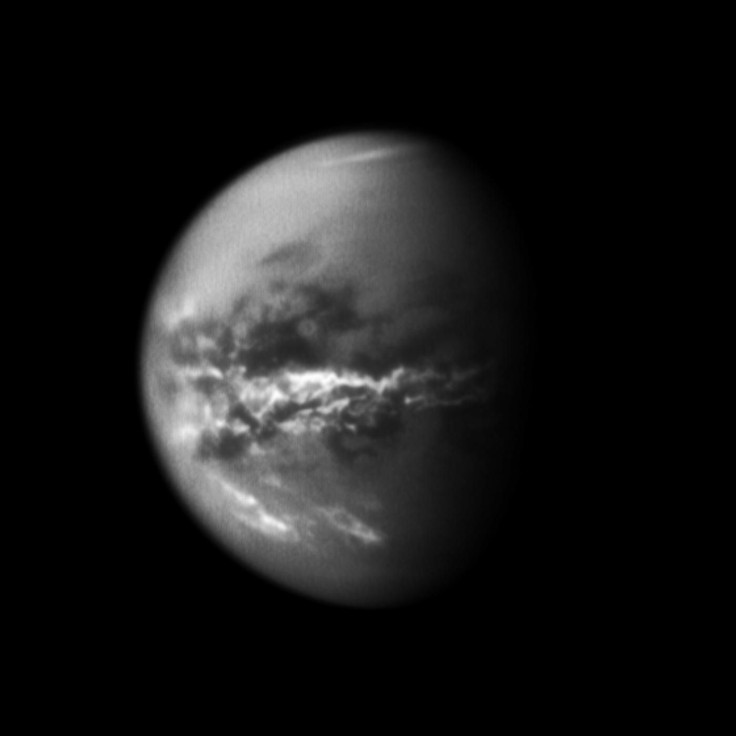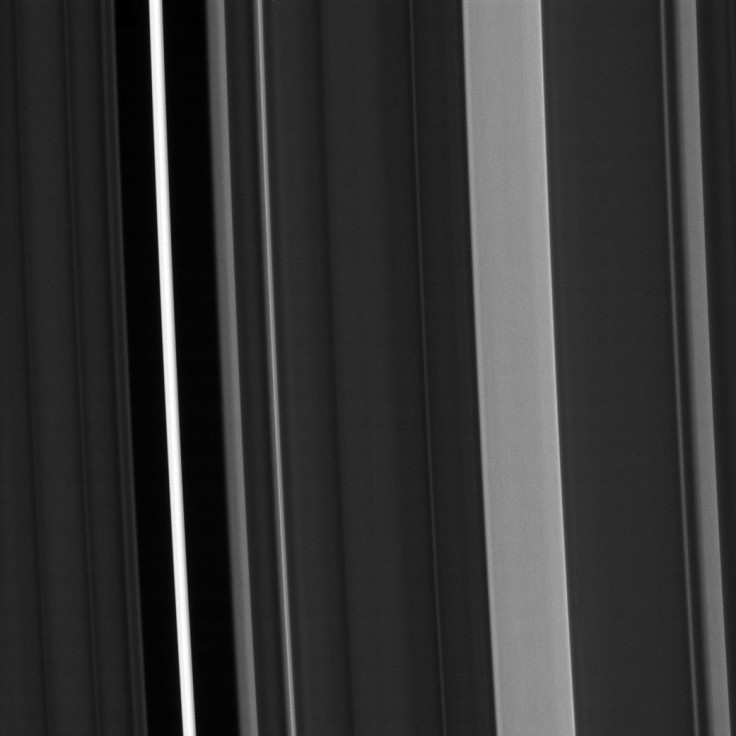Cassini Observes Summer Solstice On Saturn’s Northern Hemisphere

The Cassini spacecraft, which has been observing the Saturn system from up close since 2004, gave us yet another ringside view of an event that had never been directly seen before. It recorded the northern summer solstice on Saturn, which happens once about every 15 Earth years, and the associated changes that happen on the gas giant, its rings, and moons.
The giant storm that formed a ring around the planet’s northern hemisphere from late 2010 to 2011 was one of the most remarkable features observed by Cassini during its Solstice Mission. Another observation was that of hazes forming in the far north during the Saturn spring, leading to the disappearance of bluer hues in that region of the planet.

Read: Sounds Of Saturn Recorded By Cassini
The formation of the hazes was found to be linked to the seasonal changes in temperature and chemical composition of the planet’s upper atmosphere. Some compounds in those parts of the atmosphere were seen to react quickly to the changing amount of sunlight as Saturn and its many companions went along their orbit around the sun. The changes were also found to be sudden, instead of gradual shifts, and occurring at specific latitudes in the planet’s layered atmosphere.
“Eventually a whole hemisphere undergoes change, but it gets there by these jumps at specific latitude bands at different times in the season,” Robert West, a Cassini imaging team member at NASA’s Jet Propulsion Laboratory in Pasadena, California, said in a statement Thursday.
Large-scale seasonal changes were also seen on Titan, Saturn’s largest moon. Some methane clouds have begun to appear in the moon’s northern hemisphere since 2010, when Cassini saw giant storms around the equator, having moved there from around the south pole, where the spacecraft had seen them on its arrival in 2004. Scientists had expected the shift to the northern hemisphere to have started much longer ago.
A sudden, rapid buildup of trace hydrocarbons and haze — previously seen only in the high northern regions of Titan — was observed by Cassini in 2013 in the moon’s south, suggesting a seasonal reversal of direction for Titan’s atmospheric circulation.
“Observations of how the locations of cloud activity change and how long such changes take to give us important information about the workings of Titan’s atmosphere and also its surface, as rainfall and wind patterns change with the seasons too,” Elizabeth Turtle, a Cassini imaging team associate at the Johns Hopkins University Applied Physics Laboratory in Laurel, Maryland, said.

The observations of Enceladus, Saturn’s icy moon with a global subsurface ocean, also changed due to the solstice. As the moon’s southern half sunk into the winter darkness, Cassini could monitor the internal heat emanating from within Enceladus, without any interference by the heat from the sun.
As the planet moved toward the solstice, the position of the gradually became higher in relation to the angle of the rings, allowing more light to penetrate into them and heating them to the warmest temperatures recorded by Cassini.
The light allowed Cassini to better observe how the particles of Saturn’s rings clump together and the differences in the properties of the particles that make up the different rings. As the angle of the rings changed, it also allowed for the spacecraft’s radio signals to pass more easily and cleanly through the densest of the rings, allowing scientists on Earth to capture high-quality data about the ring particles.
Read: Titan May Have Lakes Bubbling With Nitrogen

“During Cassini’s Solstice Mission, we have witnessed — up close for the first time — an entire season at Saturn. The Saturn system undergoes dramatic transitions from winter to summer, and thanks to Cassini, we had a ringside seat,” Linda Spilker, Cassini project scientist at JPL, said in the statement.
Observing the solstice and the seasonal changes in the Saturn system was one of the primary objectives for the spacecraft’s Solstice Mission — the name given to Cassini’s second extended mission that began in 2010. The first extended mission, from 2008 to 2010, was called the Equinox Mission.
Cassini is a collaboration between NASA, the European Space Agency, and the Italian Space Agency. During its ongoing Grande Finale Mission, the spacecraft is making 22 dives through Saturn’s rings, one every week, till Sept. 15. On that day, Cassini will plunge into the gas giant’s atmosphere and burn up, bringing the mission to an end. Its fate has been planned to avoid possible contamination of Enceladus, which may be potentially habitable.
© Copyright IBTimes 2024. All rights reserved.





















